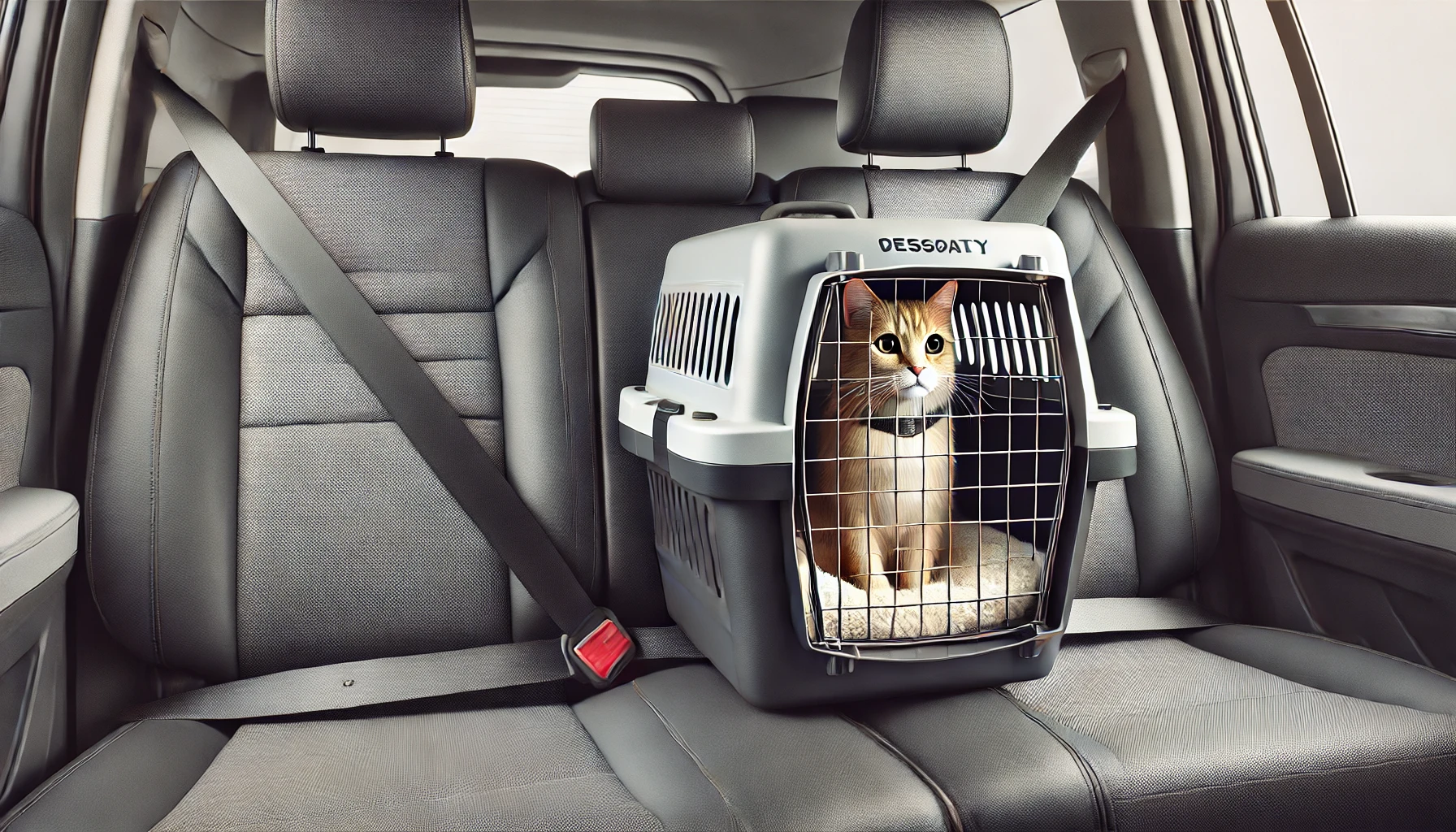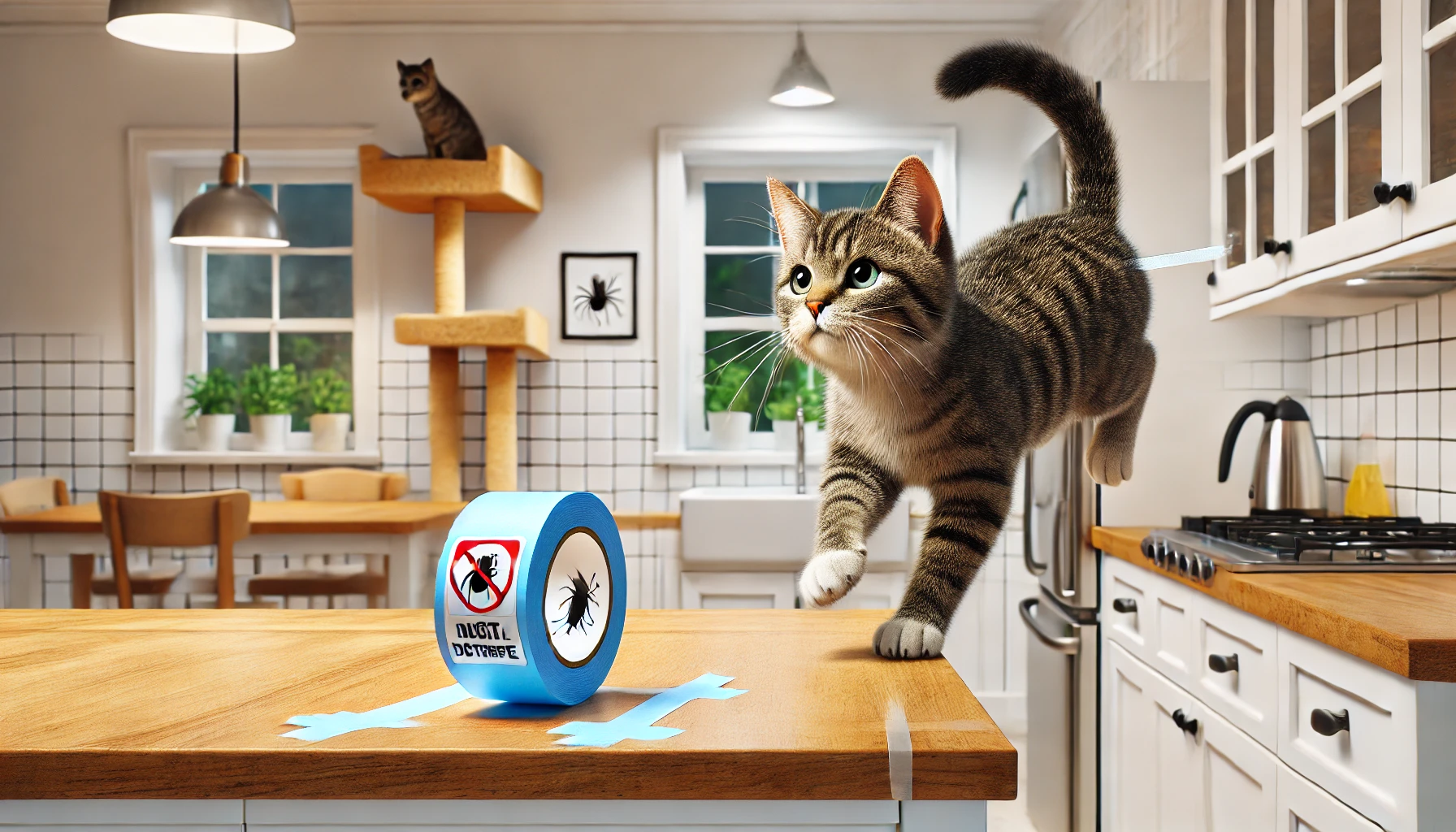Moving to a new home can be stressful for cats, as they are territorial animals who rely on familiar scents and routines. A sudden change in environment can cause anxiety, hiding, or even appetite loss.
In this guide, you’ll learn how to make the transition smoother, reduce stress, and help your cat feel safe and comfortable in their new environment.
1. Set Up a Safe Room First
When you arrive at your new home, your cat should start in one small, quiet room before exploring the entire house.
✅ How to Create a Safe Space:
✔ Choose a low-traffic room (like a bedroom or office).
✔ Provide a litter box, food, water, and a cozy bed.
✔ Add familiar toys and blankets with their scent.
✔ Keep the door closed for the first few days.
🚨 Common Mistake: Letting them roam the whole house immediately.
Instead: Start small to prevent overwhelm and anxiety.
2. Keep Their Routine as Normal as Possible
Cats feel secure with routine, so try to keep feeding, playtime, and sleep schedules consistent.
✅ Stick to Their Normal Routine:
✔ Feed meals at the same times as before.
✔ Use the same brand of litter and food to prevent stress.
✔ Maintain regular play and cuddle sessions.
🚨 Common Mistake: Changing too many things at once.
Instead: Keep familiar items and slowly introduce new elements.
3. Let Your Cat Explore at Their Own Pace
Once they feel comfortable in their safe room, gradually allow them to explore other parts of the home.
✅ How to Expand Their Space:
✔ Open the door and let them explore at their own speed.
✔ Stay calm and quiet while they explore.
✔ Allow access to one new room at a time.
🚨 If your cat hides, don’t force them out! Let them adjust naturally.
4. Use Familiar Scents for Comfort
Cats rely on scent to feel secure, so bringing familiar smells from your old home can help them settle faster.
✅ How to Use Familiar Scents:
✔ Place a worn T-shirt or their favorite blanket in their new space.
✔ Rub a soft cloth on their face and transfer the scent to furniture.
✔ Use a Feliway pheromone diffuser to create a calming atmosphere.
🚨 Common Mistake: Cleaning everything before moving in.
Instead: Keep some unwashed bedding or blankets to help them adjust.
5. Keep Your Cat Indoors Until They Feel Secure
If your cat is used to going outside, wait at least 2–4 weeks before allowing outdoor access.
✅ How to Transition Outdoor Cats:
✔ Let them fully adjust to the inside of the new home first.
✔ When ready, supervise their first outdoor trips.
✔ Use a leash and harness for safe exploration.
🚨 Common Mistake: Letting them outside too soon.
Instead: Make sure they recognize home as a safe base first.
6. Give Them Plenty of Hiding Spots
New environments can feel overwhelming, and cats often hide to feel safe.
✅ Best Hiding Spot Ideas:
✔ Provide covered beds or tunnels.
✔ Use cardboard boxes as temporary hiding places.
✔ Allow access to under beds or behind furniture.
🚨 Common Mistake: Blocking off hiding spots.
Instead: Let them hide and come out when ready.
7. Introduce New People and Pets Gradually
If your home has other pets or new people, introduce them slowly.
✅ How to Introduce Your Cat to Other Pets:
✔ Keep them separate at first and swap scents before meeting.
✔ Use baby gates for safe visual introductions.
✔ Supervise first meetings and watch for stress signals.
🚨 Common Mistake: Rushing introductions.
Instead: Give your cat time to feel safe before meeting others.
8. Monitor Their Eating, Litter Box Use, and Behavior
Stress can cause appetite loss, digestive issues, or behavioral changes.
✅ Signs Your Cat Is Adjusting Well:
🐾 Eating and drinking normally.
🐾 Using the litter box without issues.
🐾 Showing curiosity and exploring more.
🚨 Signs of Stress That Need Attention:
❌ Not eating for more than 24 hours.
❌ Hiding constantly for more than a week.
❌ Litter box accidents or diarrhea.
🚨 If any of these issues persist, consult a vet!
9. Give Extra Love and Reassurance
Your cat may need more attention and affection during this transition.
✅ Ways to Comfort Your Cat:
✔ Spend quiet time in their safe space.
✔ Use gentle play and interactive toys to build confidence.
✔ Speak softly and let them approach on their own terms.
🚨 Common Mistake: Ignoring your cat’s emotional needs.
Instead: Be patient and supportive during their adjustment period.
10. Be Patient—Adjusting Takes Time
Some cats adapt within days, while others may take weeks or months.
🐾 Signs Your Cat Is Settling In:
✅ Exploring without fear.
✅ Seeking attention and play.
✅ Eating, drinking, and using the litter box normally.
🚨 If your cat is still struggling after a few months, consult a vet or behaviorist.
Final Thoughts
Moving to a new home is a big change for a cat, but with patience, routine, and familiar comforts, they will adjust happily and safely!
🐱 Key Takeaways:
✅ Start with a safe room before introducing the full house.
✅ Keep feeding and daily routines the same.
✅ Let your cat explore at their own pace.
✅ Use familiar scents and hiding spots for comfort.
✅ Keep them indoors until they feel secure.
✅ Introduce new people and pets gradually.
✅ Watch for stress signs like hiding or not eating.
✅ Be patient—some cats take longer to adjust.
With gentle care and reassurance, your cat will soon feel safe and at home! 🏡🐾💖





